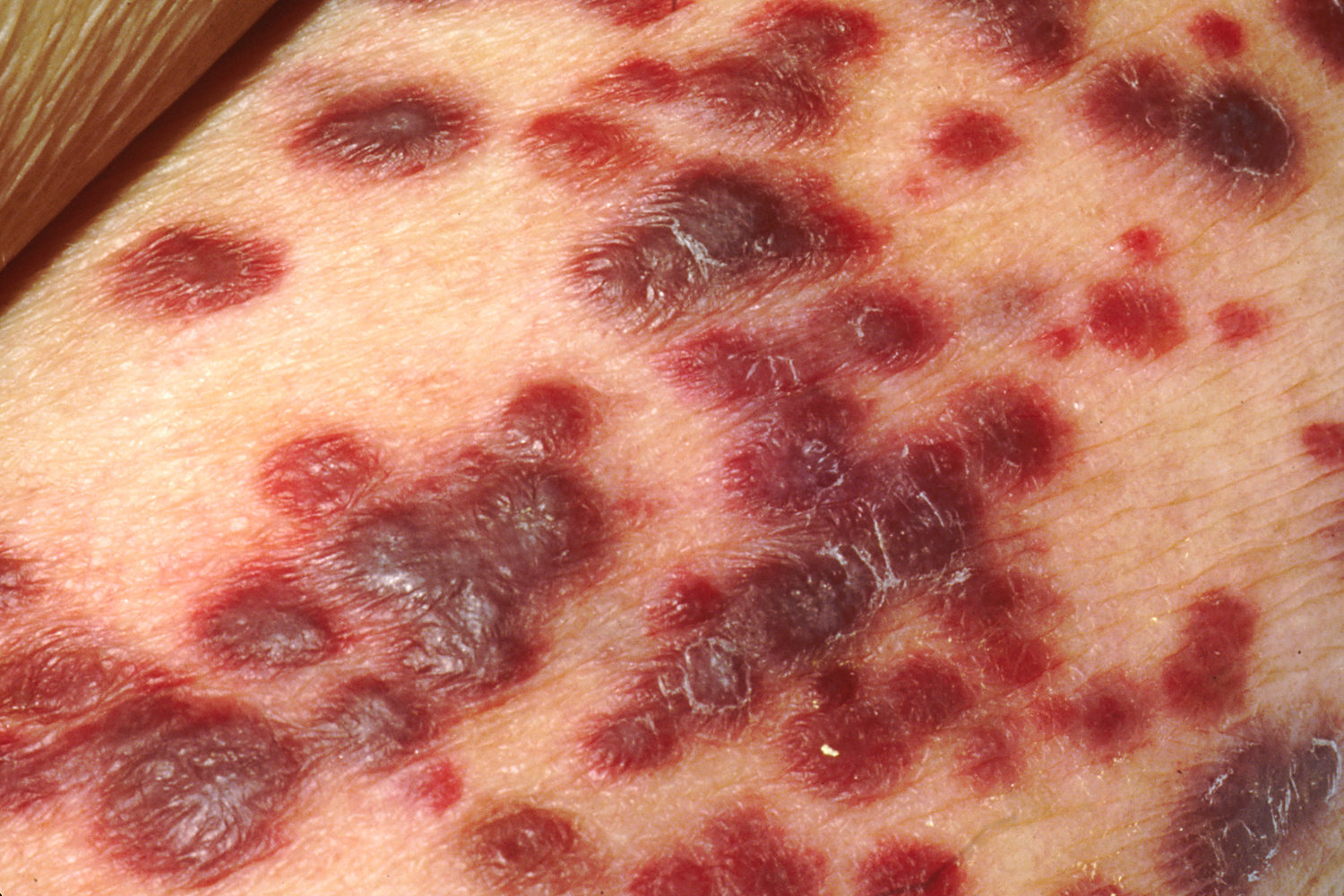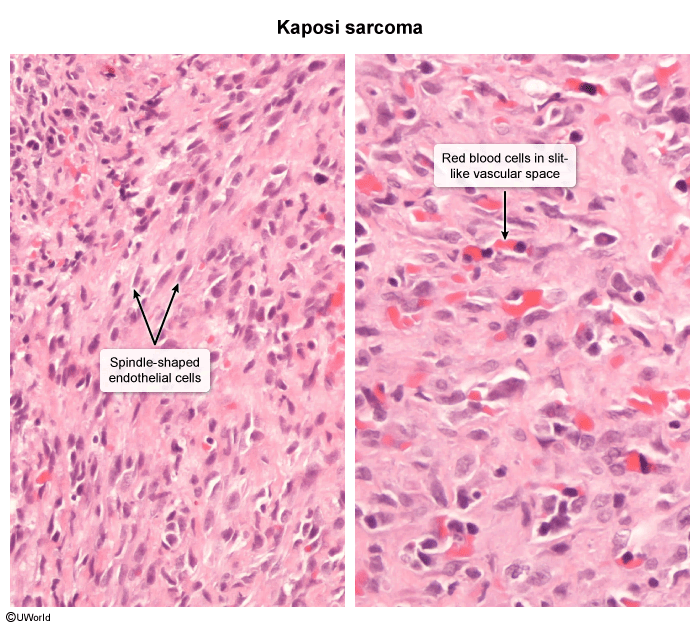Epidemiology
Most common malignancy in patients with untreated HIV
Etiology
- Caused by human herpesvirus 8 (HHV-8), a large DNA gamma herpes virus
- Routes of transmission include
- Saliva
- Sexual contact
- Potentially via blood transfusion and IV drug use
Pathophysiology
HHV-8 infects vascular and lymphatic endothelial cells, causing them to differentiate into a mixed phenotype thought to increase oncogenic potential. The HHV-8 genome contains several viral oncogenes that inhibit cell cycle regulation and apoptosis, thereby promoting endothelial cell growth and tumorigenesis
Clinical features
Patients typically present with multiple cutaneous or visceral elevated tumors with rapid growth.
- Most commonly affects the skin but may also involve the lymph nodes, mucosa, and viscera
- Can occur at any CD4 count (typically < 500/mm3)
- Initial stage:
- Painless, nonpruritic, violet papules or nodules on skin and mucosa (especially face/oral cavity and chest)

- Solitary, darkly pigmented plaques, which can evolve into nodular, bluish, submucosal, and painful skin changes
- Lesions resemble those of bacillary angiomatosis.
- Painless, nonpruritic, violet papules or nodules on skin and mucosa (especially face/oral cavity and chest)
- Progression: may disseminate to the organs, particularly the gastrointestinal tract, respiratory tract, and lymph nodes.
Diagnostics
- Biopsy and histology of cutaneous or visceral lesions (indicated in all patients)
- Dermal proliferation of spindle-shaped endothelial cells with slit-like vascular spaces, red blood cell extravasation, and inflammation.

- Dermal proliferation of spindle-shaped endothelial cells with slit-like vascular spaces, red blood cell extravasation, and inflammation.
